- People , The University
- 26/01/2021
Managing in times of corona
How do you ensure that targets are met and how do you keep the team spirit alive when your colleagues are all working from their own home offices? This past year many managers at the university had to reinvent the leadership wheel. What problems did they run into?
March 2020: at a stroke everyone is at home and the work floor has become fragmented, split across attics, home offices and kitchen tables. In early 2021 we are still in the clutches of the corona pandemic. TU/e's management – directors, professors, team leaders, deans – finds itself dealing with a diary full of Teams meetings and an inbox that says ‘ping’ at the oddest times because in many households office hours are being given over to home education. That employee who slipped unnoticed from the radar, how is he or she faring? And what about those targets – set in a world without COVID-19 – that once seemed so important?
Cursor spoke to five managers at TU/e and with coach Eric Bogers, who, working remotely, has taught a master class in management to various departments at the university.
The interviewees
Martin Boers - director of the Facility Management Center
Mariska Brzözek - director of Human Resources Management
Patricia Dankers - Professor and group leader of Biomedical Materials and Chemistry
Gerrit Kroesen - Dean of the Department of Applied Physics
Jolie van Wevelingen - director of the departments of Applied Physics and Electrical Engineering
Eric Bogers - self-employed coach for professionals
All hands on deck
What has this past year been like for these managers? Initially, it was a matter of simply getting through it without too much damage, says Jolie van Wevelingen recalling 2020. “After that period of crisis management we reinvented ourselves. Colleagues helped us consider all that was still possible. Which was quite a lot, as it turned out.” But would the director of the departments of Applied Physics and Electrical Engineering say she has become used the new reality? No, not even now. “Whenever I walk through one of our empty buildings, I could cry. It's heartbreaking.”
The most daunting task was digitalizing the education taught at his Department of Applied Physics, feels Dean Gerrit Kroesen. “That had to happen overnight. Not much went wrong, but it was a staggering amount of work.”
Professor of Biomedical Materials and Chemistry Patricia Dankers recalls the shock when the laboratories had to close in March, as well as the relief when they re-opened in May. “As long as we can use the labs, everything is okay for my group. We have taken all the recommended protective measures against corona, I feel safer there than in the supermarket.”
At the Facility Management Center the on-campus work of some staff carried on as usual. Think of security and logistics. But for director Martin Boers, corona raised some new issues: he had to divide up the teams so that if someone were to become infected, he would not face the prospect of having to quarantine all the staff with the same expertise.
It was all hands on deck from March onwards at Human Resources Management as staff wanted to give TU/e employees the best possible support as they switched to the new way of working, tells director Mariska Brzözek. “There was some homeworking already going on, but just now and then. Corona accelerated everything. How do you hold meetings? How do you digitalize the workflow? How do you maintain the feeling of being connected? We produced a corona website offering advice and an overview of all the available support.”
A thousand signs
While corona was creating a lot of extra work, regular tasks still needed doing. Managers took a realistic view: we can't move mountains. “What must continue is the education provision. Other things, like tasks involving reform and innovation, will have to be postponed. As a colleague put it: you can't hold up a thousand signs at once,” says Van Wevelingen.
The staff of Applied Physics received an email from the Departmental Board with the following message: we understand that you are not able to carry on doing everything in the usual way, tells Dean Kroesen. Brzözek is happy this was recognized. “We aren't there yet, even though there's light at the end of the tunnel thanks to the vaccinations. Now the challenge is to reach the finishing line in a good, healthy way.” HRM is constantly appealing to managers, she tells Cursor. “Talk about choices. What are you doing differently? At a different time, or simply not at all?”
Dankers, it should be said, doubts whether her group's various research projects have run into much delay due to the pandemic. As the researchers are now required to book time slots in the lab, they prepare their experiments well and work more efficiently.
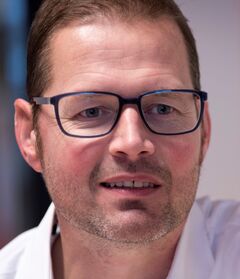
A tip from the coach: define the playing field
Coach Eric Bogers often speaks to managers who are seeking the balance between checking up and letting go. “Now with everyone working from home, it feels as though your view of progress has been clouded. Are targets being achieved? At the same time, you don't want to be breathing down the necks of your staff.” His advice is to agree very clear boundaries and within them to give the person a free hand to work however they wish. The boundaries of the ‘playing field’ may differ from person to person: with one direct report you may discuss matters daily, while saying to another: give me a fortnightly update, and you know where to find me if you ever have any questions.
Missing body language and eye contact
The linchpin in our working lives is currently the online meeting, held via Teams, Zoom or Skype. An efficient, but tiring way of holding meetings, says coach Eric Bogers. “Online meetings take it out of you. You don't have things like eye contact, from which you normally gather a lot of non-verbal signals.” Brzözek, too, is experiencing the limitations of meetings held online. She misses the body language, the way people pick up each other's vibe. And so now and then she tries to schedule a ‘walking bila’ at 1m50.
Read on below the photo.
Dankers misses the humor behind the screen. “There is less laughter during online meetings.” For her, the hybrid meeting is the ideal way of holding a meeting within the current possibilities. “We come together in a large lecture theater; the others attend via the screen. It is a way of keeping the dynamism that comes from being together while still staying safe.”
For the physics department corona coincided with their transition to a flatter organizational structure. “As part of this, as the Departmental Board we no longer communicate via the group leaders, but directly with all the employees,” says Kroesen. A weekly – later fortnightly – plenary online meeting for all staff was introduced. That worked well. The number of participants has remained steadfastly high. “In this meeting we have, for instance, set the departmental budget and discussed the education strategy.”
A tip from the coach: plan plenty of time for your meetings
Meeting requests pop into your inbox one after the other, and before you know it you are spending entire days sat there, talking to a screen. Bear the time management rules in mind, even though you are at home. Ideally, you want to be adding an extra 60 percent to the time you set aside for a meeting, to allow you to prepare and to follow up on action points.
Pulled in two directions
If your kitchen table is your desk or your lounge is your office, just try keeping a boundary between work and your personal life. How are managers helping their staff to maintain a healthy life-work balance? And to what extent are they managing to do so successfully themselves?
“Employees with preschoolers or school-aged children at home are being pulled in two directions. This situation mustn't go on too long,” says Brzözek. Similarly, at times Boers worries about his people. Sometimes he has to get them to slow down. “They are very loyal to the university and their work, perhaps even too loyal.”
The Departmental Board of Applied Physics decided to set a good example, explains Kroesen. “In an email to our staff we explained how as the board we would be doing things: only sending emails and planning appointments during office hours. Leading by example works much better than telling people what they should do.” Van Wevelingen feels it is important that employees know that it is okay to work normal working hours and to say 'no' sometimes. “If that leads to problems, contact the board and together we'll scrap or reschedule things.”
Read on below the photo.
If the need to physically separate work and personal life is strong – due to noise nuisance, the presence of housemates or, conversely, loneliness – there is the option of working on the campus every now and then. Van Wevelingen is asked about this option with regularity. “To which my reply is, Flux is virtually empty. Posted on the door of each room is the number of people who may be in that room at any one time. For some people, it is enough to simply know that they may occasionally work at the university.”
For herself, Van Wevelingen made the New Year's resolution to build in more downtime: no more working from seven 'til seven and weekends to be kept free. “All my days were getting samey while variety is precisely the thing that makes life fun.” Kroesen asked the secretaries to start planning no more than five online appointments a day, with at least a fifteen-minute break between them, and preferably a lunch break, too. Before that he was in meetings from seven thirty to six thirty. “It was driving me mad.”
Dankers meanwhile has seen herself fall back into an old habit. “Lately I have pulled a couple of all-nighters, working on a grant application. That is okay for now – I sometimes quite like working at night – but it's not something I want to keep on doing.” Boers is also struggling with the balance; his resolve to take lunchtime walks proved a vain hope. “Now I often take a short walk in the evening, it helps me get out of work mode.”
A tip from the coach: be on the look out for burn-out
Working from home increases the risk of suffering the symptoms of a burn-out, warns Bogers. So keep a close eye on your staff. These are the risk factors involved in homeworking:
- The boundary between work and home has literally disappeared.
- The working day has lost its natural cut-off, giving rise to the chance that you'll simply carry on working.
- The balance is lost between pressure of work and sources of help, like bouncing ideas off your colleagues.
- The likelihood is greater that you will be interrupted frequently while you are working.
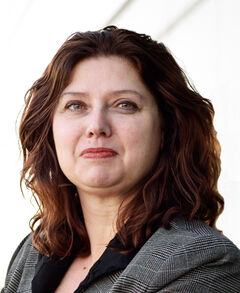
Alarm bells
That increased risk of a burn-out, are managers noticing any signs of it? Not really, is the unanimous answer. Among employees who had previously been struggling with corona, Dankers is seeing symptoms, but not beyond this group. Boers is seeing not more but fewer people than normal reporting sick. Nor is there any sign of it in the university-wide sickness figures, Brzözek knows. However, the company doctor (bedrijfsarts) is receiving more reports from employees who are finding it difficult to maintain a healthy work-life balance.
Likewise, Van Wevelingen has the impression that the percentage of sick reports is not rising but falling. “But rather than finding these low figures reassuring, I'm inclined to hear alarm bells ringing. I know that many people are having a hard time. The real picture is impossible to fathom because we tend to think, well, I'm at home anyway, if I don't feel up to getting things done I'll just sit here and work my way through my emails.”
Look at the eyes
So it is important to keep an eye on the mental health of our employees. But how do you do that when we are seeing them only on a screen? Kroesen tries – despite his resolution to limit the number of online meetings – to plan one-to-one appointments with his staff frequently. Boers found this easier to do until the summer vacation; back then he was coming to the campus fairly regularly to have a meeting in person, at 1m50. “Now I do this only very sporadically. For the rest, I try other means, such as telephoning.”
It is a matter of looking closely, believes Van Wevelingen. “I look at the eyes during online meetings, how does this person come across? And sometimes I notice it in the way someone writes an email. Then I think, oh, hold on a minute.”
Dankers is concerned mostly about her master's students. “In the main, the researchers are now focusing on their work, but I would like to see the students having more contact with people.”
In some way or another everyone is feeling the impact of corona, Brzözek observes. Young parents have children at home, others feel lonely or have neighbors who are remodeling their house. “The home base is essential if we are to be able to do all the rest; managers must recognize that this has the highest priority.” Van Wevelingen champions again the need to reduce work pressure. The high work pressure is a topic of conversation at the university, but in practice little is changing, she observes regretfully. “In every layer of the organization people are struggling to find time.”
A tip from the coach: reach for the phone
If you are concerned about an employee's well-being, then pick up the phone every day. “Managers are often wary of badgering employees but, really, you are not likely to be calling too often,” says Bogers. Over the phone, don't talk about work but ask about the person's personal circumstances. Refer them, if necessary, to professional help.
Holding things together
Team spirit, how do you maintain that when the physical distance between people is substantial? Many departments have introduced a collective 'start the week' moment or a daily online coffee break, Brzözek knows. HRM's monthly plenary meeting to celebrate birthdays and successes has also moved online. “These are really fun, well-attended sessions. Employees find sharing their news with a large group of people less daunting when they can't see them.”
As far as online pub quizzes and other virtual festivities are concerned, a certain degree of fatigue is discernible. “I've had quite enough online drinks parties,” admits Dankers. During an online cocktail workshop, Brzözek found herself longing to drink a cocktail on the beach with colleagues. The others, too, are more than ready for real contact. “For the sake of social cohesion, this situation must not go on too much longer,” observes Kroesen.
The future is hybrid
The corona pandemic has caused a great deal of misery, but has it also given rise to some good things that we would like to keep once the virus is under control? Despite its flaws, (some degree of) working from home, is the unanimous answer. A perfectly possible option, Boers has seen, even in jobs that we always thought could only be done on the work floor, such as secretarial roles.
Hybrid working, partly at home and partly in the office, is the future. Human Resources is discussing the implications of this with housing and real estate, tells Brzözek. Likewise, the Department of Applied Physics is preparing itself, says Kroesen, by equipping all the meeting rooms with good cameras to make hybrid meetings possible.
And the virus has ushered in other good things, too. Dankers values the greater focus on the primary processes and Van Wevelingen is pleased with the innovations made in the fields of education and remote research.
At the same time, some things are being greatly missed. “The creativity that arises when you try out something in the lab. With time being limited, experiments are now being performed very efficiently,” says Dankers. Kroesen misses “the efficiency of those quick, short contacts”: just taking a moment to mention something since you're seeing each other anyway. Practical benefits or not, Van Wevelingen simply longs for contact with colleagues. “There's so much we're currently losing: contact, unity, energy – the things that make our work enjoyable.”
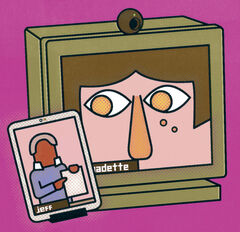

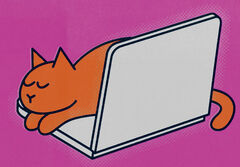
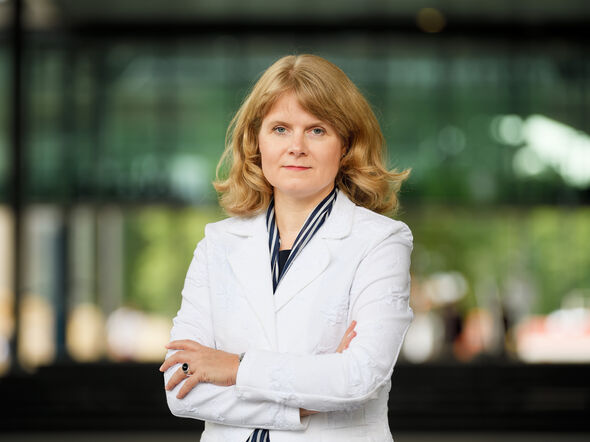
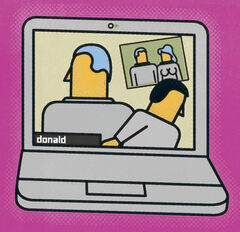

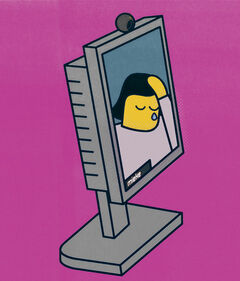

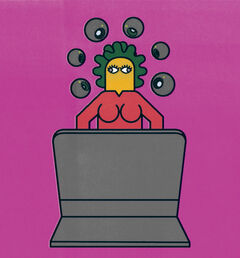

Discussion